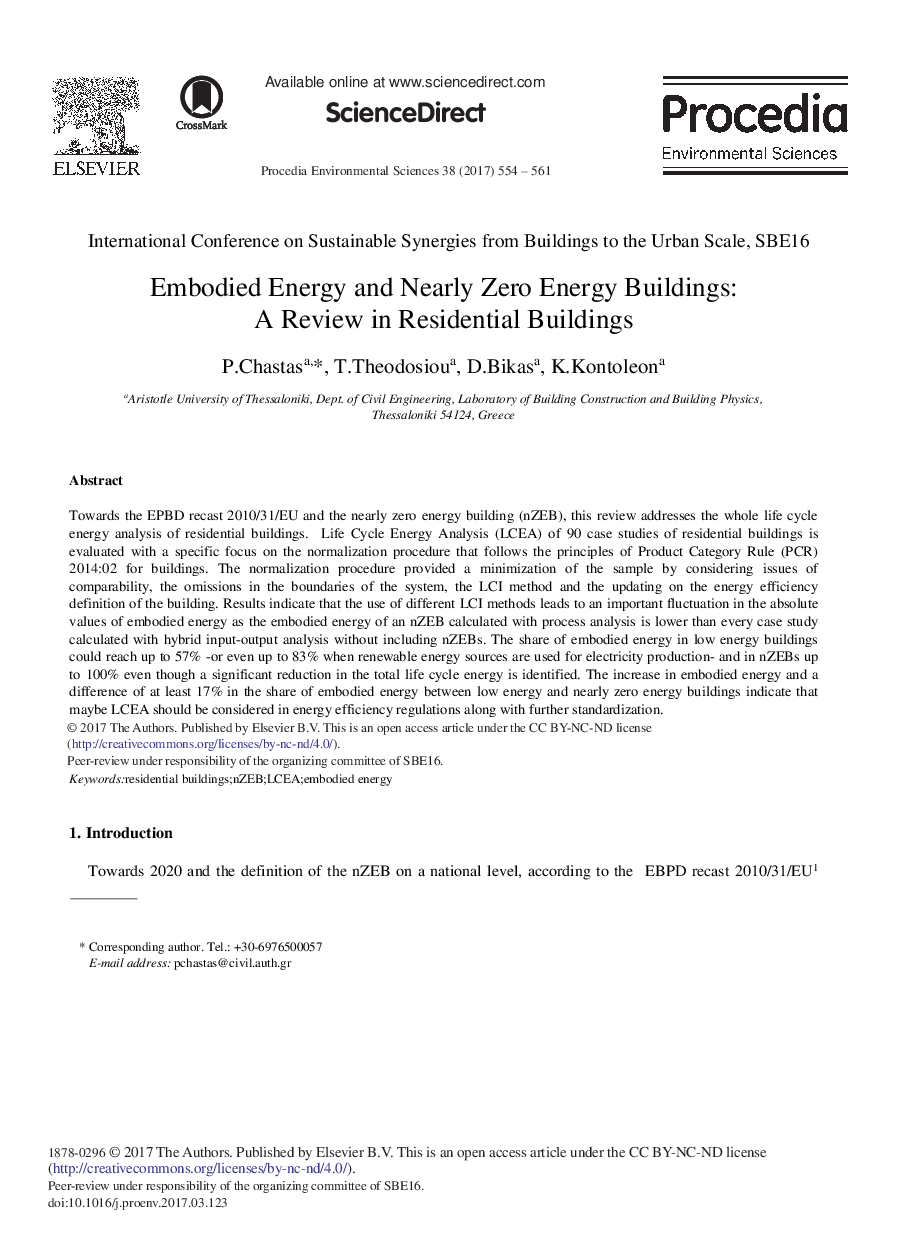| Article ID | Journal | Published Year | Pages | File Type |
|---|---|---|---|---|
| 5745076 | Procedia Environmental Sciences | 2017 | 8 Pages |
Towards the EPBD recast 2010/31/EU and the nearly zero energy building (nZEB), this review addresses the whole life cycle energy analysis of residential buildings. Life Cycle Energy Analysis (LCEA) of 90 case studies of residential buildings is evaluated with a specific focus on the normalization procedure that follows the principles of Product Category Rule (PCR) 2014:02 for buildings. The normalization procedure provided a minimization of the sample by considering issues of comparability, the omissions in the boundaries of the system, the LCI method and the updating on the energy efficiency definition of the building. Results indicate that the use of different LCI methods leads to an important fluctuation in the absolute values of embodied energy as the embodied energy of annZEB calculated with process analysis is lower than every case study calculated with hybrid input-output analysis without including nZEBs. The share of embodied energy in low energy buildings could reach up to 57% -or even up to 83% when renewable energy sources are used for electricity production- and in nZEBs up to 100% even though a significant reduction in the total life cycle energy is identified. The increase in embodied energy and a difference of at least 17% in the share of embodied energy between low energy and nearly zero energy buildings indicate that maybe LCEA should be considered in energy efficiency regulations along with further standardization.
